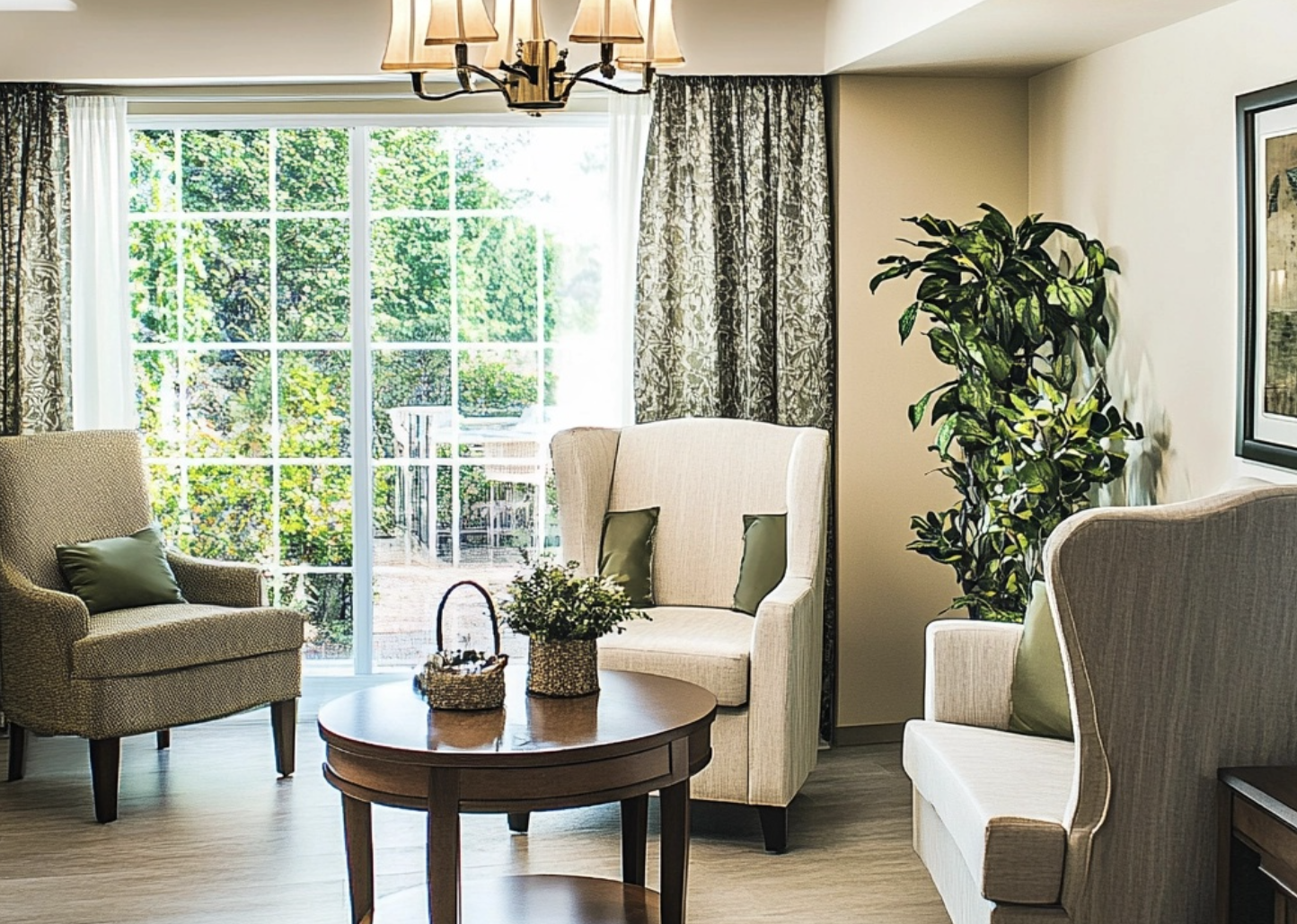Studies show that family involvement in patient care goes way beyond occasional visits and emotional support. Residents in assisted living facilities show better health outcomes and higher satisfaction levels when their families participate in their care. The relationship between family participation and improved patient care is a significant factor in modern healthcare delivery systems.
Family involvement in patient care covers everything from emotional support to promoting quality care in assisted living facilities. Residents’ quality of life improves through consistent monitoring, active communication with staff, and participation in care planning decisions. A complete support system emerges from these shared efforts that maximizes professional care’s impact while keeping family bonds strong.
The Impact of Family Visits on Resident Well-being
Research shows that family visits significantly affect resident well-being in assisted living facilities. Statistics reveal that 70% of these residents are widowed, which makes family connections especially important to their emotional health.
Emotional benefits of regular family contact
Regular family interactions anchor residents emotionally and create opportunities to bond, reminisce, and make new memories together. Research shows that the quality of family relationships affects mental health more than how often visits occur. These meaningful connections help residents keep their sense of identity and personal history, especially when they face cognitive challenges.
Reduced feelings of isolation and loneliness
Older adults face serious health risks from social isolation. Research shows that isolated seniors have a 50% increased risk of developing dementia and other medical conditions. Family visits serve as a significant way to curb these risks. Regular family involvement brings these vital benefits:
- Lower risks of depression and anxiety
- Better cognitive stimulation through social interaction
- Stronger sense of belonging and community connection
- Better adaptation to new environments
Improved mood and life satisfaction
Better relationships with primary family caregivers lead to higher life satisfaction scores and lower depression rates. Residents who take part in socioemotional support activities with family members show clear improvements in their overall well-being. Studies show that 15-25% of older adults in long-term care facilities experience depression. Family involvement plays a vital role to maintain positive mental health outcomes.
Older adults in care facilities consistently say their family relationships most affect their social support and quality of life. These meaningful interactions help residents handle aging challenges while they stay connected to their personal identity and family story.
Family as Advocates for Quality Care
Family support serves as the life-blood of quality care in assisted living facilities, and family members play a vital role in resident care. Research demonstrates that families who participate actively contribute substantially to better care outcomes and higher resident satisfaction rates.
Monitoring care and identifying issues
Family members serve a crucial role when they monitor the quality of care their loved ones receive. Their watchfulness helps maintain excellent care standards and allows them to spot potential problems early. They have several key monitoring duties:
- Observing physical and emotional well-being changes
- Reviewing medication administration records
- Assessing living conditions and cleanliness
- Monitoring participation in activities
- Evaluating staff interactions and response times
Communicating resident needs and priorities to staff
Clear communication between families and facility staff builds a strong foundation for customized care. Family members know their loved one’s priorities, habits, and needs that caregivers might not notice right away. Regular, open dialog with the core team ensures that care approaches match each resident’s priorities and cultural background.
Participating in care planning meetings
Care planning meetings give families a chance to help shape their loved one’s care strategy. These meetings happen every three months or when major changes occur. Family members can work with the care team and share vital information about their loved one’s priorities and background that helps create customized care plans.
Family members who keep detailed records of all communications and observations are great at supporting their loved ones. These records are a great way to get help when raising concerns or asking for changes to care plans. Families who stay involved in their loved one’s care usually feel more satisfied with the quality of services.
Collaborative Partnerships Between Families and Staff
Strong partnerships between families and assisted living facility staff are the life-blood of exceptional resident care. The Cornell Institute for Translational Research on Aging shows that well-laid-out programs focused on staff-family collaboration can reduce conflicts by 40% and enhance overall care quality.
Building positive relationships with facility staff
Families and staff need to work together with mutual respect to build strong relationships. Research shows that facilities with well-laid-out communication programs see much less staff burnout and happier families. Everything in building positive relationships includes:
- Regular, planned communication channels
- Acknowledging the core team’s expertise while deepening their commitment
- Clear expectations and boundaries
- Mutual respect for each other’s role
- Consistent appreciation for care efforts
Sharing resident history and priorities
Resident information exchange builds a foundation for individual-specific care delivery. Staff members bring their professional nursing knowledge and clinical experience to the table. Family members give valuable explanations about their loved one’s priorities, habits, and life history. This shared approach makes detailed care strategies possible that respect both medical needs and personal priorities.
Working together to solve problems
Staff and families must work as partners to solve problems in assisted living environments. Research shows that facilities with shared decision-making processes see a significant reduction in care-related conflicts. Clear communication, shared responsibility, and mutual trust help resolve challenges that come up.
The Partners in Caregiving in Assisted Living Program (PICAL) shows how well-laid-out training in communication skills and conflict resolution can reshape staff-family relationships. Staff members learn advanced listening techniques, respectful communication, and shared problem-solving strategies through these programs. Facilities that use such programs report better relationships and improved care results. Their staff members feel less burned out and families express more satisfaction with the care.
Overcoming Barriers to Family Involvement
Modern families face many challenges when they try to stay involved in their loved ones’ care at assisted living facilities. Understanding and dealing with these barriers is significant to ensure families participate consistently in resident care.
Addressing geographic distance challenges
Geographic separation creates one of the most important obstacles that families face today. Studies reveal that all but one of these family caregivers live more than an hour away from their loved ones’ facilities. The physical distance creates emotional strain and makes regular involvement difficult. Care managers can help by promoting your interests locally. They attend care conferences and provide regular updates to distant family members.
Managing time constraints
Family members struggle to balance their caregiving duties with work and personal life. Studies show that smart time management can lower caregiver stress by 30% and enhance care quality. Here are practical ways to manage your time better:
- Quick virtual check-ins during lunch breaks
- Team up with family members for visits
- Set up automatic reminders
- Plan visits every three months
- Smart use of time off from work
Utilizing technology for virtual visits
Technology has transformed how families stay involved in assisted living care. Modern facilities now use digital solutions that make family connections easier:
- Video conferencing platforms for virtual visits
- Patient portals for accessing care updates
- Mobile apps for medication tracking
- Smart devices for voice-activated communication
- Telehealth services for remote medical consultations
Research indicates that 88% of residents who use video communication feel less lonely, while technical issues affect all but one of these users at 12%.
Coordinating with other family members
Family members who coordinate well provide consistent support and avoid gaps in care involvement. A shared digital calendar helps schedule visits while regular family conference calls keep everyone’s care participation active. Care coordination apps let families:
- Track visit schedules
- Share updates about resident well-being
- Coordinate care responsibilities
- Document important care decisions
- Maintain communication with facility staff
Family members who use well-laid-out communication systems visit 25% more often and coordinate care better.
Conclusion
Family involvement is the life-blood of exceptional care delivery in assisted living facilities and creates a powerful support system that improves residents’ physical and emotional well-being. Research shows substantial benefits in multiple areas – from reduced isolation and improved mental health outcomes to better care quality through active advocacy and monitoring. These positive outcomes emerge when families consistently participate through both traditional visits and modern communication methods. They work with facility staff to ensure individual-specific care approaches.
Assisted living facilities today recognize the vital connection between family participation and resident well-being. They adapt their practices to support meaningful family involvement despite challenges like geographic distance and time constraints. The facilities that succeed adopt technological solutions and structured communication programs. This makes it easier for families to stay connected with their loved ones while contributing to care decisions. The integrated approach to family participation builds an environment where residents thrive, staff members feel valued, and families trust their loved ones’ care quality.












